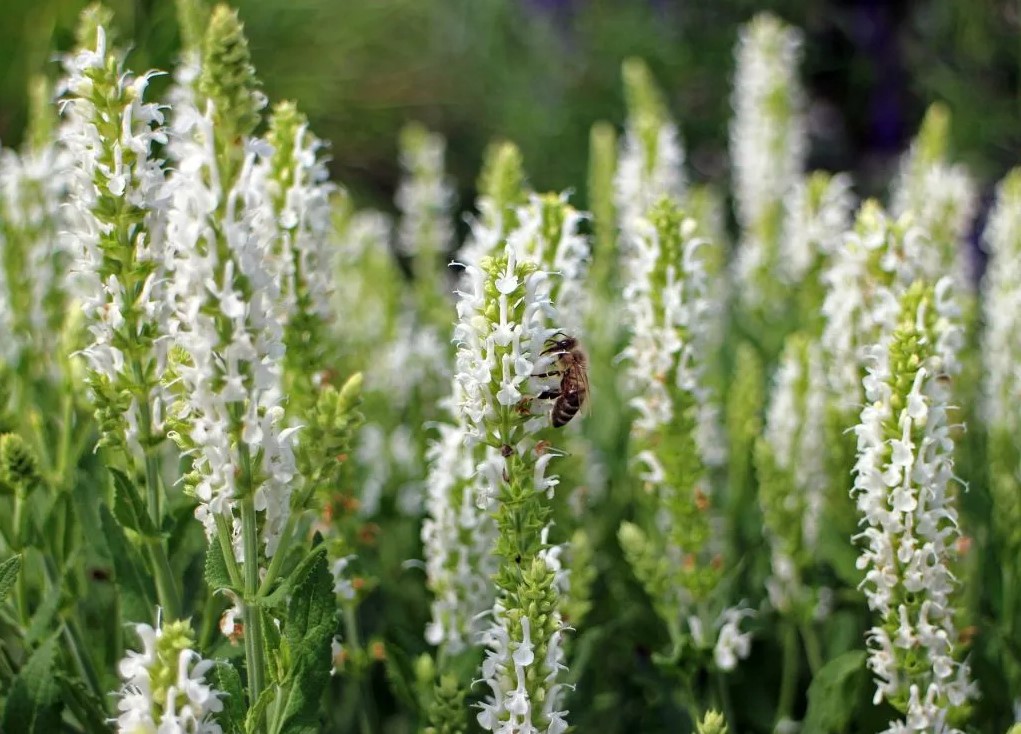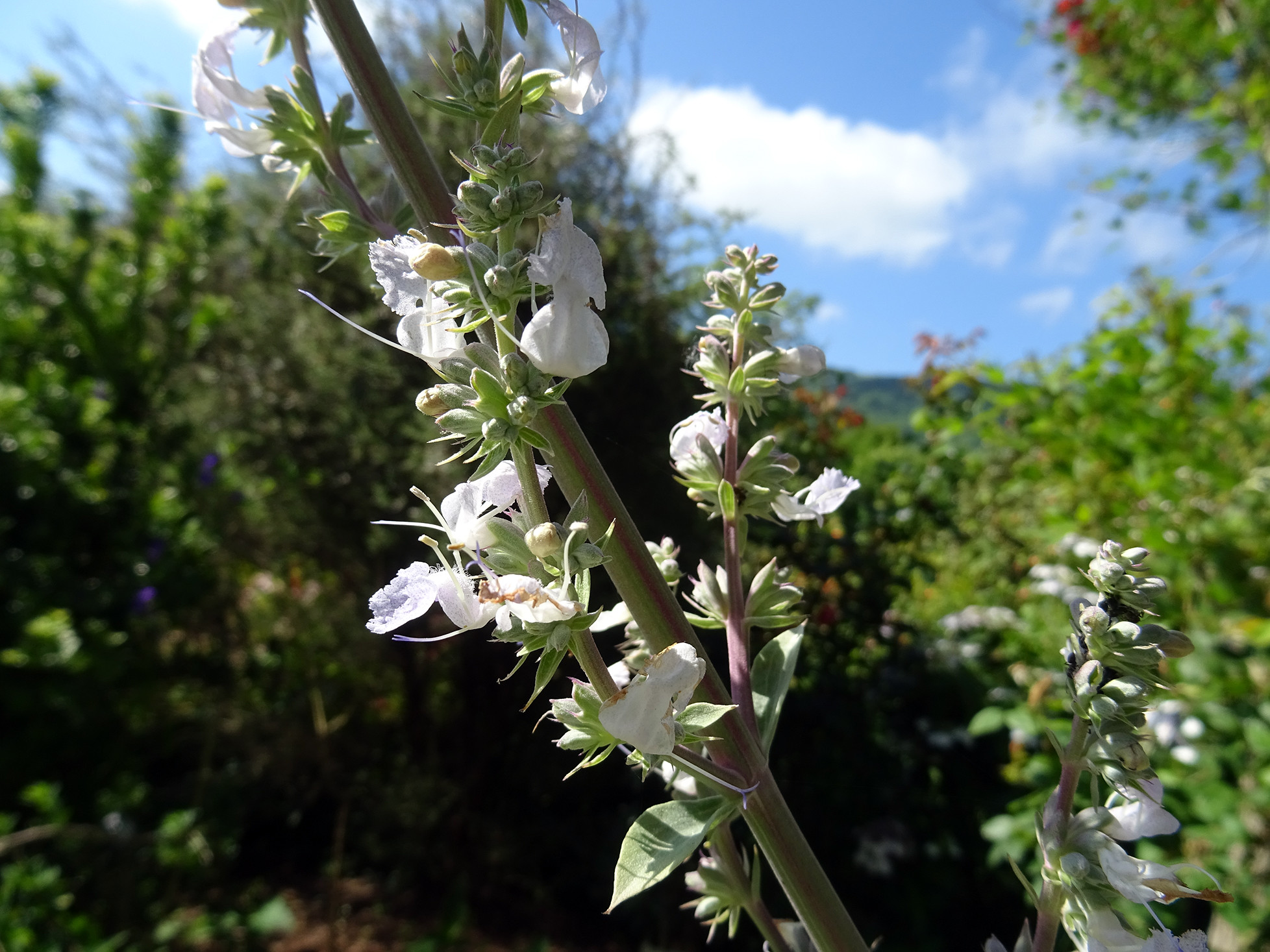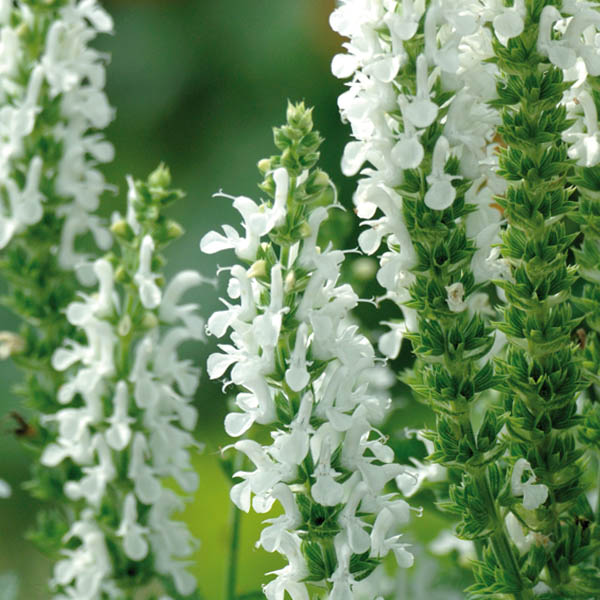When you look into the Native American culture, there’s nothing that beats the popularity of the White Sage Plant. From being used as an insect repellent to its herbal benefits, the plant has garnered mounds of popularity across the globe and for all the right reasons.
Besides the therapeutic properties, the white sage plant also stands out with its stunning appearance, especially with the bright and vibrant purple-colored flowers. Also, the plant attracts a lot of pollinators, especially bees, which can be optimal for your garden.

However, we understand that growing a white sage plant in your garden isn’t the easiest thing to do. Not only do you need to be mindful of the growing parameters, but you also need to prioritize the quality of the plants you are growing.
This article should give you all the details that you need to know about the white sage plant, its growing guide, and the art of smudging.
White Sage Plant – Overview
As we mentioned before, the white sage plant was popularly grown by the Native American tribes as a sacred plant. It was extremely popular among the Californian tribe, the Tongva or Gabrielino tribe. It was originally called kasiile.
Since then, the plant has evolved through different parts of California, including the Santa Barbara region, thereby being known as the Californian White Sage plant.

The best thing about growing white sage is due to its resilience. You can no doubt use them for their therapeutic and medicinal benefits or add them to the food too. However, nothing beats the fact that the white sage plant has an ornamental value to it that several people prioritize.
Here’s a quick overview in a tabular form for you to get a better understanding of the plant and its growing requirements:
| Growing parameters | Description |
| Common name | White sage, Californian white sage, sacred white sage, etc. |
| Scientific name | Salvia apiana |
| Origin | Southern California |
| Height | Up to 6 feet |
| Light | Direct sunlight |
| Water | Minimal water; Drought tolerant |
| Temperature | Warmer weather |
| Humidity | Mild |
| Soil | Sandy, well-drained |
| Fertilizer | Not required |
| Propagation | Seed or cutting |
White sage is a perennial desert plant, which is one of the reasons why they are highly drought-resistant and need dry and warm weather conditions to grow optimally. They do grow in humid temperatures but it also makes them more prone to diseases, which can be a downer.
Although white sage doesn’t propagate at an uncontrollable rate, they do need a good space around them to grow freely. Besides growing around 6 feet in length, they can also spread a few feet in terms of diameter, so you need to be mindful of that.

Planting white sage in your garden is ideal if you have a lower water garden or live in desert-like and dry climate regions where the plant can grow without any hassle.
What is Smudging or Smoke Cleansing?
White sage has a lot of therapeutic benefits, according to legends. Not just that, the plant was treated as sacred by the Native American tribes back in the day.
That’s where the process of Smudging or Smoke Cleansing comes from. Besides being used for its medicinal purposes, people also collect a bundle of white sage leaves with the stem and burn it to extract the sweet, pungent smell from the plant.
The process is known as smudging or smoke cleansing and is quite popular among people who believe in the power of natural healing. People who burn the sage leaf bundles then fan the smoke on the objects to purify or cleanse them. Not just objects, the process of smoke cleansing is also done on people.
In most cases, the leaves and stems of the white sage plant are put together into small bundles, which are then completely dried out and then burnt for the smudging process. Some individuals only dry the leaves, crush them into powder and then light them as incense.

The concept of smudging is also used in other contexts and traditional procedures, like during bear dance or by the Cahuilla bird singers. It is quite a popular inclusion among the Californian tribal religions and has been for centuries.
Growing Guide for White Sage Plant
Given the traditional, medicinal, and therapeutic benefits of the white sage plant, it isn’t surprising that several gardeners want to grow the plant in their backyard. It is not a difficult process, provided that you offer all the right growing parameters and care that the plant needs.
Here’s a quick breakdown of all the relevant information:
- Sunlight requirements
If you look into the overview table, you will realize that the white sage plant requires direct sunlight and no shade. This is primarily because the plant originates from the desert areas in California. If you leave it in the shade, chances are that the same will drastically affect its growth.

Also, along with the light parameters, white sage thrives in warmer climates. It won’t do well in winter seasons, especially when the temperature drops to below 20 degrees Celsius. If you live in areas with extremely cold winters, consider transferring your white sage plant indoors where there is enough warmth.
- Water parameters
Next on the list of considerations are the water parameters. White sage has taproots, which dig deeper into the soil bed, extracting the required water from there. So, there’s no need for you to heavily douse the plant in water day after day.
Ideally, you can maintain a 0.5 to 1-inch water level per week and keep an eye on the plant. Since they are drought resistant as well, chances are that you won’t have to worry when you stay away from your home for longer periods. The more the plant grows and the foliage disperses, the more you’d need to reduce the watering. This is because the plant’s roots have been established by then.

However, don’t stop the watering entirely. You can occasionally water the plant every other week, especially if the weather is getting too hot.
- Soil requirements
There are no alternatives to sandy soil when it comes to growing white sage plants. It requires dry and well-drained soil and this works the best to support its growth throughout the period.
Some of the growers even include granite into the mix to mimic the soil conditions like its available in the Californian foothills where the plant originally originated from. If you don’t have this texture of soil naturally where you live, opt for cactus pot soil instead because it has a similar texture and composition.

Your only aim with the soil for your white sage plant is to get something that’s well-draining. If the soil is too wet and soggy, it will end up killing the roots and the plant, in general.
- Spacing plantation
As we said before, the white sage plant grows tall and wide. So, if you are growing it in your garden, you need to ensure that you are spacing it out from other plants around.
Since it grows a few feet in diameter, it will cover up quite a bit of the space around it. In such cases, the last thing you want to do is plant it somewhere that’s crowded and doesn’t allow seamless propagation of the plant around its close vicinity.
- Fertilizer needs
The white sage plant is enough on its own, which is one of the reasons why it doesn’t require excess fertilizer for its growth. It prioritizes the need for low-nutrient soil. So, avoid putting extra fertilizers or growing them around plants that enrich the soil with excess nutrients.
A gentle sprinkle of mushroom compost is considered to be quite effective in helping with the growth of the plant in the long run. So, if you do add to add some nourishment to the soil, this is something that you can try out.
- Propagation
You can grow white sage from seeds or cuttings. The propagation process is a little bit complicated to understand, so we’ll highlight them in detail in the next section of the article.
How to Propagate White Sage Plants from Seeds?
If you are an experienced gardener, chances are that you’d know all about propagating plants from seeds. The same applies to the white sage plants as well.
However, the process is quite complicated, especially because white sage seeds don’t germinate easily. There are a lot of complicated steps that you need to partake in. In the best-case scenario, you might have a 20-30% success rate at germinating the seeds.
One of the best ways to use seeds for propagation is by ensuring that you start growing the seeds in the tray instead of directly seeding them into the soil. This will more than likely kill the plant in the process.
Also, when you are growing them with the seeds, start by laying them out evenly and then cover them with a light layer of soil. Then, mist the top layer of the soil and you are all good to go.
There are certain parameters required for germination, including:
- Temperature – 75-80 degrees Fahrenheit
- Sunlight – direct sunlight exposure
- Soil – lightly moistened
You should always wait for the soil to completely dry before you again add water to it. If you do it continually before the soil dries, chances are that the same will end up causing issues with the germination process.
How to Propagate White Sage from Cuttings?
If the seed germination process isn’t working out for you, the next thing that you can consider doing is propagating it from cuttings.
However, even that has around a 20-30% success rate, which can be a little disappointing. When taking the cutting, you need to ensure that the plant is a few years old and has young cutting that you can plant into the soil for further roots.
For the soil, take a mixture of perlite, medium-grained sand, and compost. You can directly place the cutting into the soil mixture. For better results, take the cutting and dip it in some water and Bontone rooting powder to support and augment the rooting process.

Unlike seeds where you need to leave the potting soil in the sunlight, for cuttings, you need to keep them in some shade. A heat mat also works. However, the wagering requirements are pretty much the same in both cases. You have to wait until the soil has completely dried before you can go ahead and water it again.
You need to wait for around 4-6 weeks. After that, gently tug at the cutting. If you find resistance against your tugging, it suggests that roots have formed into the soil. You can leave the plant to grow in the pot or transfer it into the soil bed in your garden.
Once the roots come in, you need to take them out of the shade and put them under direct sunlight. That’s extremely crucial for further growth and propagation.
What are the Growing Problems with the White Sage Plant?
Growing white sage is fairly easy, provided that you give it the optimal growing needs and parameters. This includes light exposure, temperature, and many other attributes.
However, pests are one of the most common issues with growing this plant. Aphids, whiteflies, and red and black flat mites will hover around the plant quite frequently. The easiest way to keep them out is by spraying a solution of water and neem oil.

As for diseases, powdery mildew is a common issue. Rust is also a common disease that affects the plant and the rooting system. You can remove the affected part and ensure that it doesn’t seep into the other parts of the foliage.
Since white sage needs well-drained soil, excess moisture can lead to root rot. So, never overwater your sage plants.
FAQs
1. How do you start white sage from seed?
Growing white sage isn’t as complicated as you think. Ideally, when it comes to growing the plant, it is better to sprinkle the seeds on the soil and then wet them down with clean water to ensure optimal growth. Working with a spray bottle is ideal, especially when it comes to spraying the water evenly on the soil. Also, maintain the temperature between 70° and 85°F.
2. Where are the seeds on a sage plant?
If you are looking for the seeds on a sage plant, it is present inside the bell-shaped flowers that grow on the stem of the plant. They are quite large, which means that you won’t miss them out when looking for them on the plant. If you want to harvest the seeds, wait until the flowers turn dark in color, following which you can snip the flower from the stem.
3. Is white sage hard to grow from seed?
Growing white sage isn’t the easiest thing in the world, especially because they need very precise growing parameters. Also, it thrives in greenhouse propagation; if that is something you are planning to grow. Growing it from the seeds directly has a very low success rate, and the germination might be slow and erratic.
4. Can I grow sage from a cutting?
More than seeds, white sage grows better from cutting and trimming; if that’s a route of growing you are considering indulging in. What we’d recommend you do is take the cutting of a more mature stem to ensure that it grows optimally. Softwood cuttings work the best in this case.
5. Does white sage produce seeds?
Yes, white sage plants produce seeds inside the flowers that grow on the side of the stems. These seeds can be used for further germination.
Conclusion
Growing white sage is beneficial and therapeutic. For beginner gardeners with very little information about white sage and its growing requirements, we hope this article serves as a comprehensive guide for you to refer to. Ensure that you keep a check on the harvesting and storage so you can utilize the sage leaves and branches for a prolonged period.

